NATO Defense Market Size
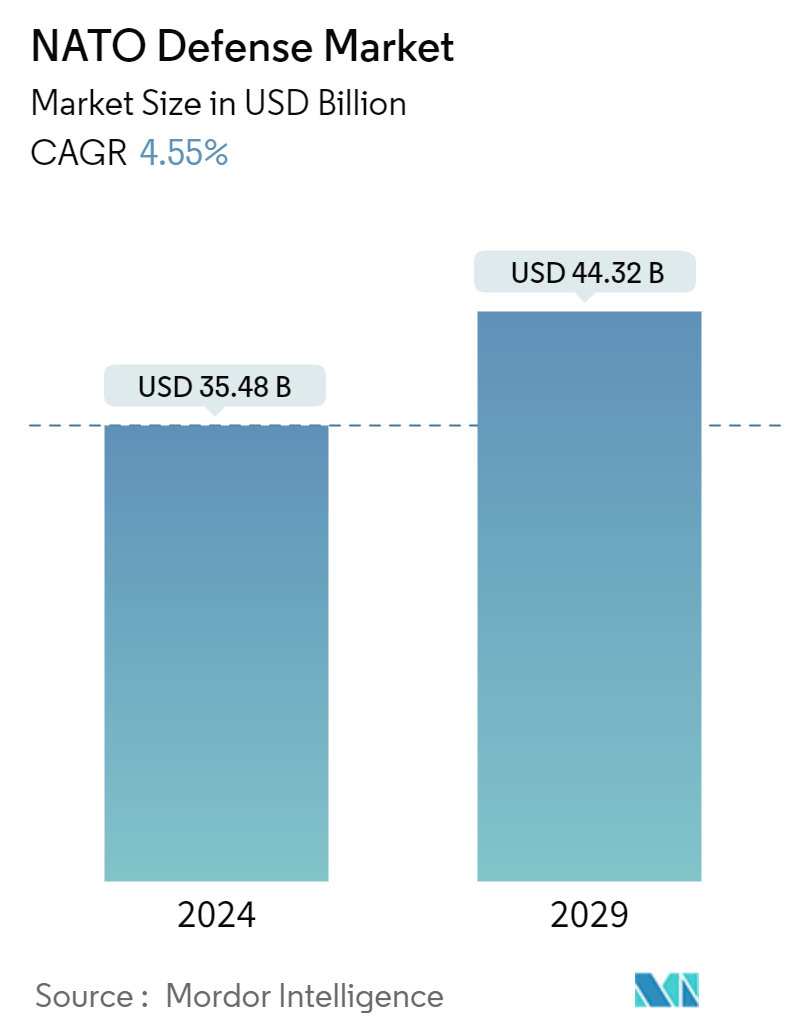
| Study Period | 2019 - 2029 |
| Base Year For Estimation | 2023 |
| Market Size (2024) | USD 35.48 Billion |
| Market Size (2029) | USD 44.32 Billion |
| CAGR (2024 - 2029) | 4.55 % |
| Market Concentration | Low |
Major Players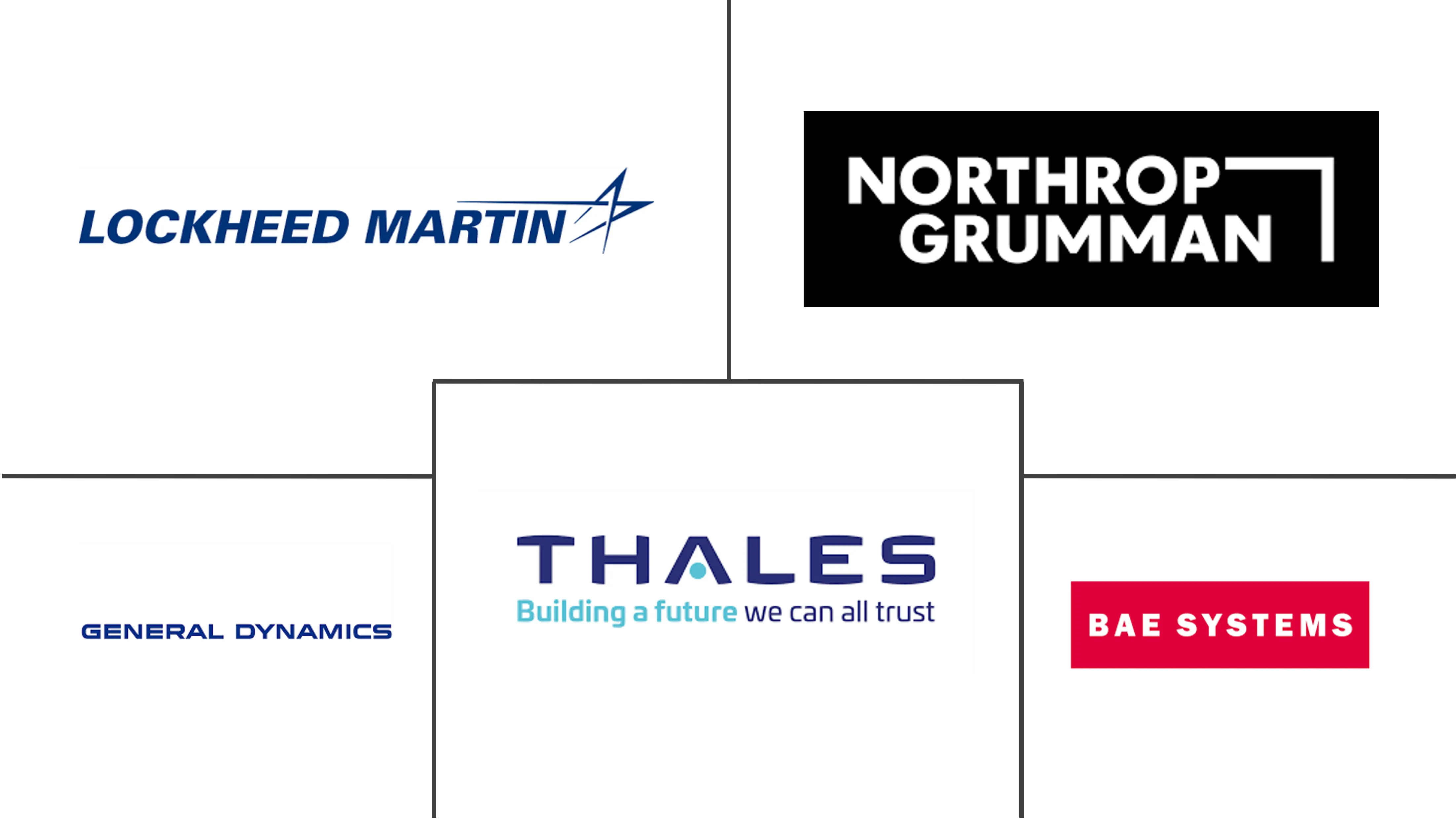
*Disclaimer: Major Players sorted in no particular order |
NATO Defense Market Analysis
The NATO Defense Market size is estimated at USD 35.48 billion in 2024, and is expected to reach USD 44.32 billion by 2029, growing at a CAGR of 4.55% during the forecast period (2024-2029).
The market is witnessing growth, propelled by increased defense spending and modernization efforts in major economies. However, economic, legal, and political regulations governing military procurement could impede this growth. The conflict between Russia and Ukraine has notably influenced the defense budgets of NATO countries, with many European nations bolstering their spending in response to Russia's actions.
Technological advancements and the pressing need for military modernization are critical drivers in the NATO defense market. As technology advances rapidly, global defense sectors must innovate to maintain their strategic advantages.
While the market's growth hinges on factors like fund allocation for new equipment, it faces challenges from rapid technological evolution, which can shorten the effective lifespan of new technologies. Nations are heavily investing in bolstering their military capabilities through new weapon procurements or modernizing their existing arsenals with advanced weaponry and next-gen missiles.
Besides addressing traditional security concerns like ballistic protection and ammunition reliability, the industry is pivoting toward cutting-edge technologies such as AI, unmanned systems, and advanced materials. These innovations not only enhance the armed forces' capabilities but also mitigate risks and boost the efficiency of military operations.
Compliance with regulatory standards, including testing and documentation, can be costly. Companies must invest in R&D, testing facilities, and specialized equipment to meet these standards. Furthermore, the high cost of adhering to NATO's regulations can pose a significant entry barrier for new market players. This could stifle competition and potentially hamper innovation, especially for smaller or newer businesses.
A prolonged shortage of critical components from a primary supplier can also lead to production delays. The materials used in defense systems must meet stringent quality benchmarks.
NATO Defense Market Trends
The Weapons and Ammunition Segment to Showcase Significant Growth During the Forecast Period
The weapons and ammunition segment is set for significant growth during the study period. With a global military focus on bolstering ammunition reserves and a rising demand for training ammunition, the NATO defense market is poised for enhancement. This emphasis is particularly crucial as NATO forces partake in peacekeeping and counter-insurgency missions, underscoring the ongoing necessity for ammunition.
Many NATO nations are enhancing their military capabilities to respond to escalating global threats and the increased deployment of NATO forces in counter-insurgency operations. This factor, coupled with a rise in small ammunition procurement and heightened defense expenditures, drives growth in this segment.
Advancements in arms ammunition technology are reshaping the defense arena. The quest for precision and efficiency has led to the development of smart ammunition, featuring sensors that provide soldiers with real-time battlefield data, aiding their decision-making. Countries are making substantial investments in modernizing their arsenals. For instance, the European Union and NATO members have significantly supported Ukraine's defense initiatives, offering ammunition, intelligence, maintenance, and substantial funding.
On this note, the European Union earmarked USD 2.6 billion from its European Peace Facility for Ukraine. Furthermore, in March 2022, a US and UK-led EUCOM Control was established to streamline national contributions to Ukraine. Germany, a prominent player, witnessed a 12% surge in its weapon exports in the first half of 2023, totaling USD 4.89 billion, with a notable portion directed to Ukraine. Hungary, Cyprus, the United States, and France also emerged as significant beneficiaries of Germany's arms industry.
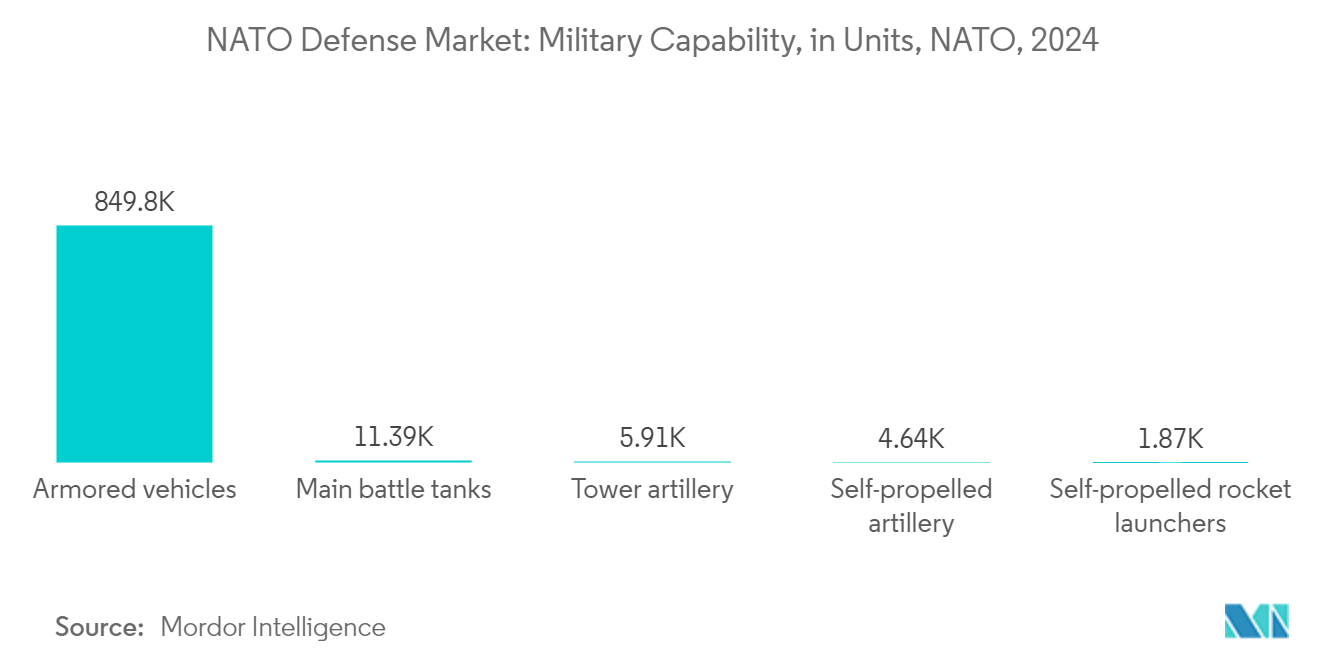
The United States is Expected to Dominate the Market During the Forecast Period
During the forecast period, the United States is poised to maintain its market dominance, fueled by a surge in defense spending and a pronounced focus on bolstering its capabilities. In 2023, the US-led global defense expenditures allocated a substantial USD 916 billion. This budget primarily targeted capability enhancements and innovations, solidifying the nation's competitive edge. With market players ramping up investments, a rising appetite for advanced weaponry, and a pressing need for heightened security, the defense sector is witnessing significant growth.
The ongoing conflict between Russia and Ukraine, political tensions involving NATO and Russia, and escalating cross-border disputes in Asia-Pacific and the Middle East are driving nations to bolster their defense capabilities. The US military's global footprint spans over 150 countries, with a notable portion of its personnel stationed permanently abroad, excluding regions like Afghanistan, Iraq, and Syria. Beyond active combat, US troops are engaged in peacekeeping missions, serve as military attachés, and are involved in embassy and consulate security, among other classified assignments. These deployments have notably fueled the US Armed Forces' procurement of arms and ammunition. Heightened battlefield capabilities from China and Russia have prompted the United States to ramp up investments in advanced weaponry. Furthermore, the country's involvement in NATO missions abroad is amplifying the demand for diverse ammunition types.
In the 2024 defense budget proposal, the Department of Defense was eyeing a USD 974 million investment for the production of 155 mm M1128 projectiles. The US Army's procurement plan for 2024 comprises 16,950 rounds. Notably, American Ordnance and General Dynamics Ordnance & Tactical Systems are set to manufacture these M1128 projectiles for the US Army.
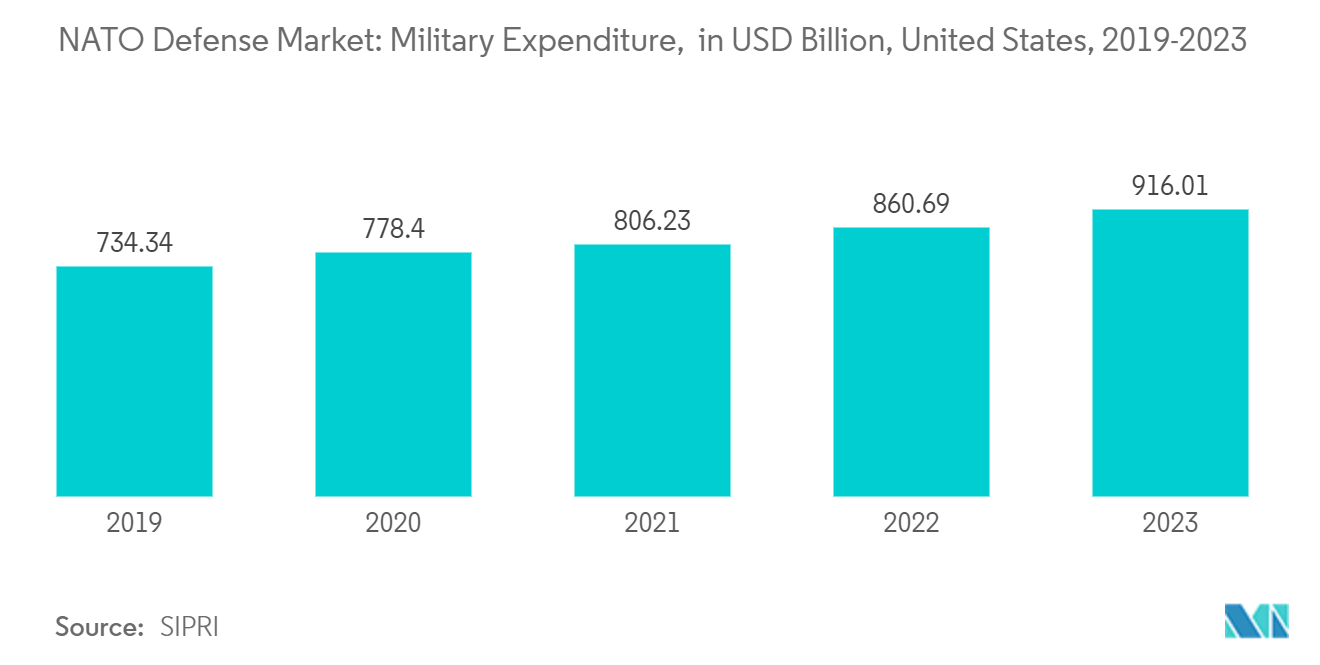
NATO Defense Industry Overview
The NATO defense market is fragmented, and several manufacturers supply diverse defense equipment to the armed forces across 32 NATO countries. Notable market players include Lockheed Martin Corporation, Northrop Grumman Corporation, General Dynamics Corporation, BAE Systems PLC, and THALES.
With countries like Romania, Bulgaria, and Poland ramping up defense spending and initiating large-scale modernization programs, players have a growing window of opportunity. As global militaries prioritize cutting-edge equipment for battlefield superiority, a strong R&D focus is pivotal for defense contractors. This drives product innovation and expands their customer base, bolstering their market share and global footprint. Additionally, major players channel significant investments into R&D, enhancing munitions for defense forces.
Stringent safety and regulatory norms in the defense sector pose barriers for new entrants. Precision munition contracts demand high technological prowess and span years. Hence, meticulous risk assessment and monitoring are imperative to safeguard a manufacturer's operational integrity.
NATO Defense Market Leaders
-
Lockheed Martin Corporation
-
Northrop Grumman Corporation
-
General Dynamics Corporation
-
BAE Systems plc
-
THALES
*Disclaimer: Major Players sorted in no particular order
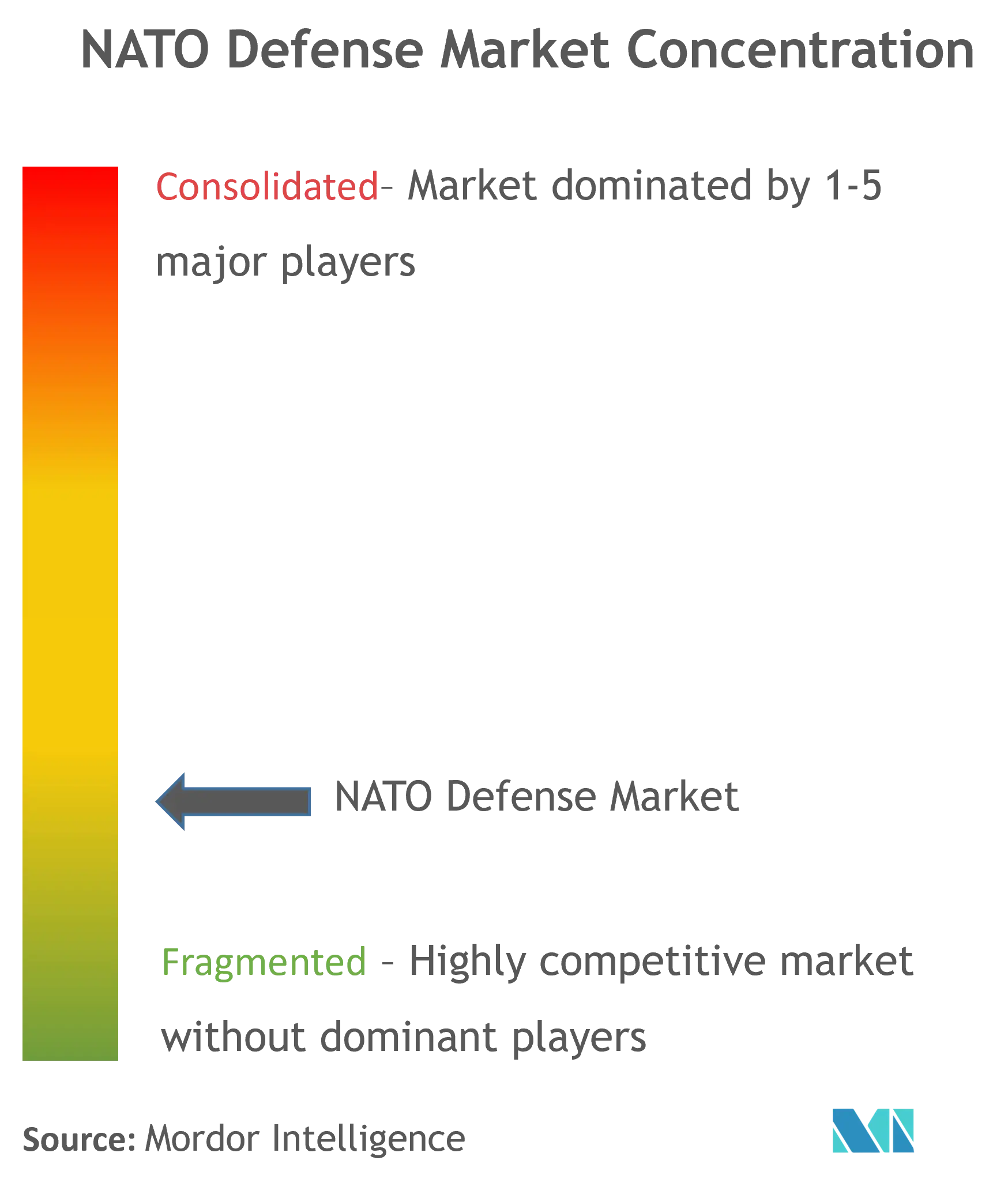
NATO Defense Market News
January 2024: Germany allocated USD 1.33 billion for prototyping an air defense system, with the Boxer IFV serving as its base, focusing on close-range protection. The system's key elements encompass a command post, fire control tanks, radar units, and anti-aircraft missile tanks.
November 2023: The defense sectors of the United Kingdom and Poland inked a significant agreement valued at over GBP 4 billion (USD 4.33 billion). This deal paved the way for the next phase of Poland's air defense initiative. In a collaborative effort, MBDA (UK) and PGZ (Poland) are set to bolster Poland's ground-based air defense capabilities, enabling them to counter airborne threats effectively. The plan outlines the production of more than 1,000 Common Anti-Air Modular Missiles – Extended Range (CAMM-ER) and over 100 iLaunchers.
NATO Defense Market Report - Table of Contents
1. INTRODUCTION
- 1.1 Study Assumptions
- 1.2 Scope of the Study
2. RESEARCH METHODOLOGY
3. EXECUTIVE SUMMARY
4. MARKET DYNAMICS
- 4.1 Market Overview
- 4.2 Market Drivers
- 4.3 Market Restraints
-
4.4 Porter's Five Forces Analysis
- 4.4.1 Bargaining Power of Buyers/Consumers
- 4.4.2 Bargaining Power of Suppliers
- 4.4.3 Threat of New Entrants
- 4.4.4 Threat of Substitute Products
- 4.4.5 Intensity of Competitive Rivalry
5. MARKET SEGMENTATION
-
5.1 Type
- 5.1.1 Personnel Training and Protection
- 5.1.2 Communication Systems
- 5.1.3 Weapons and Ammunition
- 5.1.4 Vehicles
-
5.2 Country
- 5.2.1 United States
- 5.2.2 United Kingdom
- 5.2.3 Canada
- 5.2.4 Turkey
- 5.2.5 Italy
- 5.2.6 Germany
- 5.2.7 France
- 5.2.8 Poland
- 5.2.9 Spain
- 5.2.10 Belgium
- 5.2.11 Rest of NATO Countries
6. COMPETITIVE LANDSCAPE
-
6.1 Company Profiles
- 6.1.1 Rheinmetall AG
- 6.1.2 BAE Systems plc
- 6.1.3 THALES
- 6.1.4 L3Harris Technologies Inc.
- 6.1.5 ASELSAN AŞ
- 6.1.6 Raytheon Technologies Corporation
- 6.1.7 Airbus SE
- 6.1.8 Lockheed Martin Corporation
- 6.1.9 Northrop Grumman Corporation
- 6.1.10 General Dynamics Corporation
- 6.1.11 The Boeing Company
- 6.1.12 Textron Inc.
- 6.1.13 Leonardo SpA
- 6.1.14 Elbit Systems Ltd
- 6.1.15 Turkish Aerospace Industries
- *List Not Exhaustive
7. MARKET OPPORTUNITIES AND FUTURE TRENDS
** Subject To AvailablityNATO Defense Industry Segmentation
The North Atlantic Treaty Organization (NATO), known as the North Atlantic Alliance, comprises 28 European and 2 North American countries. Established on April 4, 1949, NATO's core mission is to safeguard the freedom and security of its member nations through political and military strategies.
The NATO defense market is segmented by type and country. By type, the market is segmented into personnel training and protection, communication systems, weapons and ammunition, and vehicles. The report covers the market sizes and forecasts for the NATO defense market in NATO countries. For each segment, the market size and forecast are provided in terms of value (USD).
| Type | Personnel Training and Protection |
| Communication Systems | |
| Weapons and Ammunition | |
| Vehicles | |
| Country | United States |
| United Kingdom | |
| Canada | |
| Turkey | |
| Italy | |
| Germany | |
| France | |
| Poland | |
| Spain | |
| Belgium | |
| Rest of NATO Countries |
NATO Defense Market Research FAQs
How big is the NATO Defense Market?
The NATO Defense Market size is expected to reach USD 35.48 billion in 2024 and grow at a CAGR of 4.55% to reach USD 44.32 billion by 2029.
What is the current NATO Defense Market size?
In 2024, the NATO Defense Market size is expected to reach USD 35.48 billion.
Who are the key players in NATO Defense Market?
Lockheed Martin Corporation, Northrop Grumman Corporation, General Dynamics Corporation, BAE Systems plc and THALES are the major companies operating in the NATO Defense Market.
What years does this NATO Defense Market cover, and what was the market size in 2023?
In 2023, the NATO Defense Market size was estimated at USD 33.87 billion. The report covers the NATO Defense Market historical market size for years: 2019, 2020, 2021, 2022 and 2023. The report also forecasts the NATO Defense Market size for years: 2024, 2025, 2026, 2027, 2028 and 2029.
NATO Defense Industry Report
Statistics for the 2024 NATO Defense market share, size and revenue growth rate, created by Mordor Intelligence™ Industry Reports. NATO Defense analysis includes a market forecast outlook to 2029 and historical overview. Get a sample of this industry analysis as a free report PDF download.



